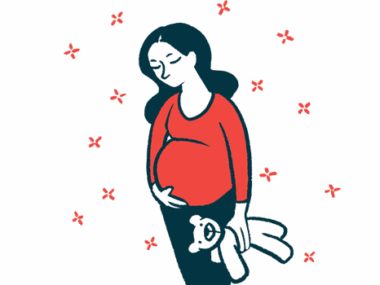Man develops aHUS following cocaine use, avoids kidney damage
Instances of illicit drug being linked to disease are uncommon
Written by |

A 47-year-old man developed atypical hemolytic uremic syndrome (aHUS) after using cocaine, but ultimately recovered before his condition led to long-term kidney damage, according to a case report in Spain.
While past reports have linked aHUS to cocaine use, such cases are uncommon. The man described in the report had no genetic mutations associated with aHUS, which is particularly unusual.
“This case underscores cocaine as a rare but important precipitating factor for atypical HUS,” researchers wrote.
The study, “Hypertensive Emergency and Atypical Hemolytic Uremic Syndrome Associated with Cocaine Use: A Diagnostic and Therapeutic Challenge,” was published in Diseases.
Symptoms included difficulty seeing, severe headache
A type of thrombotic microangiopathy, aHUS is a category of diseases in which clots form in small blood vessels and can damage internal organs, particularly the kidneys.
Excessive red blood cell destruction and acute kidney failure are hallmark symptoms of aHUS. People with aHUS also typically have thrombocytopenia, or low levels of platelets, which are cell fragments important for blood clotting.
The disease is driven by the abnormal activity of a part of the immune system called the complement system. In its dysregulated state, the complement system may promote inflammation and blood clotting. Complement dysfunction can be due to a combination of genetic mutations and environmental triggers, which also include the use of illicit drugs.
In this study, researchers described the case of a man who developed aHUS after using cocaine.
He did not have a prior history of high blood pressure, diabetes, or dyslipidemia (high levels of fatty molecules in the blood), and came to the hospital two days after consuming cocaine.
Initially, his symptoms included difficulty seeing, which was progressively worsening, and a severe headache. When he arrived at the emergency department, he appeared disoriented and had severely high blood pressure. His heart rate and breathing rate were both elevated.
Blood and urine tests revealed the presence of thrombocytopenia and signs of kidney disease.
After being admitted to the intensive care unit, he received treatment for his high blood pressure, which dropped within two days.
The man’s clinical team excluded several potential causes of high blood pressure and kidney disease. His complement system was overactive, leading the team to suspect aHUS. To confirm the suspicion, they performed a kidney biopsy, which revealed changes in blood vessels consistent with the diagnosis of aHUS.
Patient received weekly infusions of Soliris for a month
Soliris (eculizumab), an approved first-line aHUS therapy, was not immediately available, but the team requested approval to administer it due to the patient’s severe symptoms. While waiting for approval, the team administered the corticosteroid prednisone and the patient completed four rounds of plasmapheresis — a type of treatment used to remove and replace plasma, the liquid component of blood.
He then received weekly infusions of Soliris for four weeks, followed by two maintenance doses in the next four weeks. Treatment continued until the results of a genetic test came back. Those results indicated that the man did not have mutations associated with aHUS, at which point he discontinued its use. He did not experience any relapses.
“One month after admission, the patient exhibited a favorable hematologic response, with progressive stabilization of hemoglobin and platelet counts,” the team wrote.
At a six month follow-up, the man had regained kidney function without requiring dialysis.
Given the rarity of case reports of aHUS triggered by cocaine use, this successful diagnostic and therapeutic approach might help guide clinicians in similar cases, according to the researchers.
“Early identification of aHUS features and prompt initiation of complement inhibition therapy may be critical to preventing irreversible kidney injury,” the researchers wrote, highlighting how the collaboration between different specialists and the use of advanced diagnostic tools facilitated the patient’s recovery.






